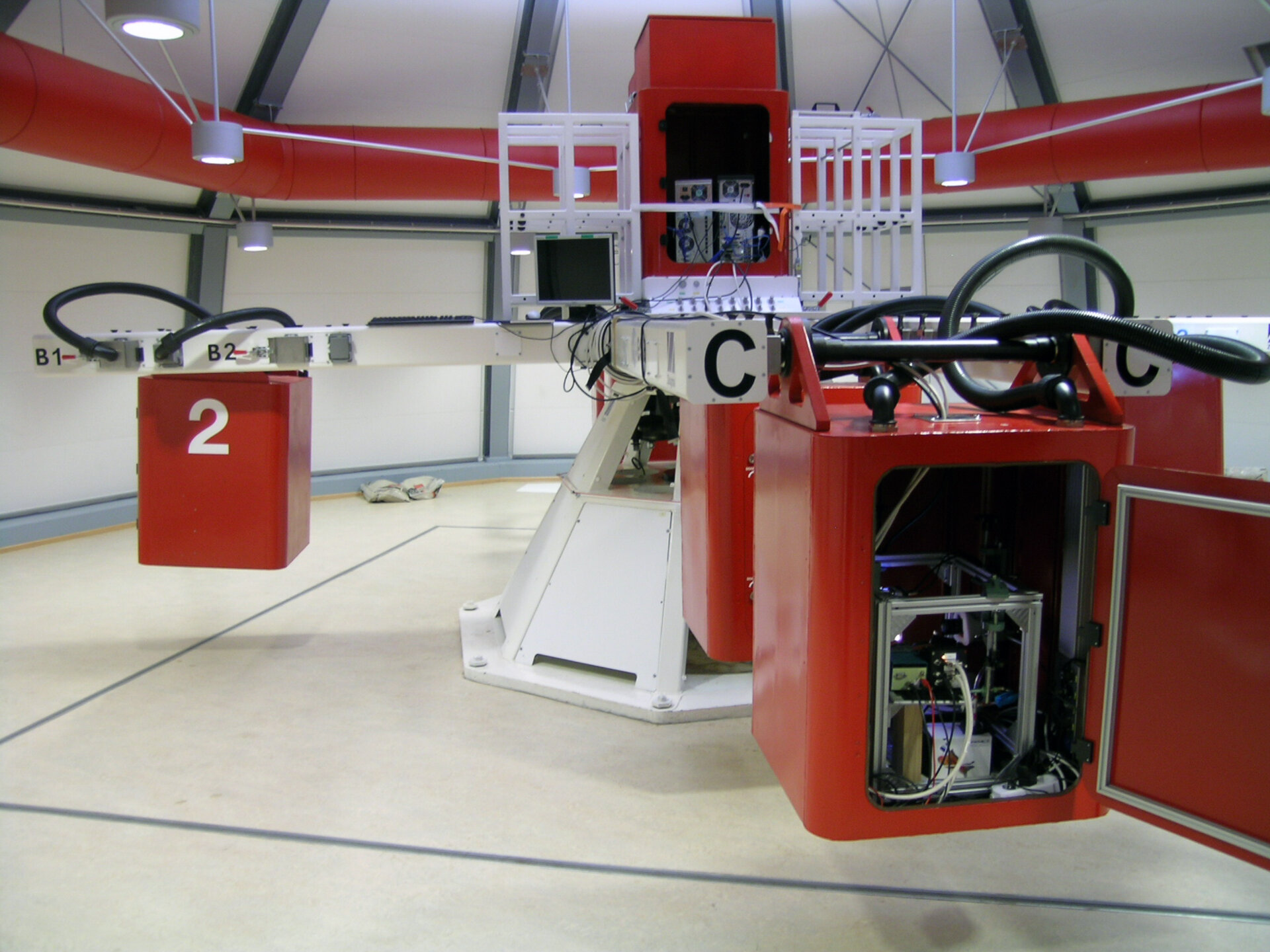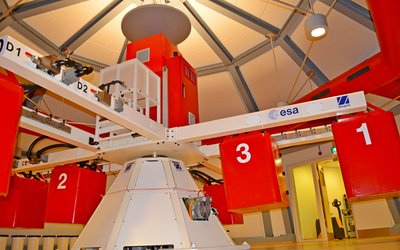2012 Spin Your Thesis! campaign completed
This year’s Spin Your Thesis! campaign has been completed. Three student-led experiments were conducted in the hypergravity conditions made possible by ESA’s Large Diameter Centrifuge (LDC).
The LDC is eight metres across. It revolves to simulate gravitational conditions from normal 1g up to 20g (twenty times the acceleration due to Earth’s gravity). Such hypergravity allows scientists to study natural phenomena under gravitational conditions not naturally found on Earth.
‘Spin Your Thesis!’ provides the facility to university students pursuing scientific or engineering studies. Three teams were selected to run their experiments in the LDC during ESA’s 2012 Spin Your Thesis! campaign .
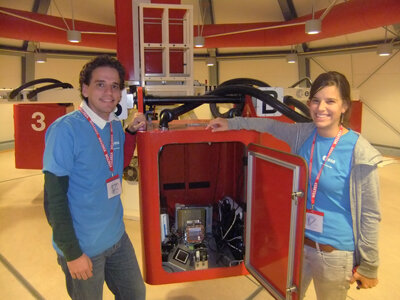
The Bubble Movers team used the LDC from 10-13 September. Based at the Universitat Politècnica de Catalunya, Spain, their experiment investigated the effect of sound on bubbles rising through liquid. The apparatus created a small bubble at the bottom of a water-filled vessel and then they videoed its rise as sound waves were applied.
They did this for gravities from 1g to 19g and are analysing their results to see how different sound patterns can be used to alter the path of the rising bubble. Team member Anna Garcia-Sabaté says, ‘The results obtained will be a part of my PhD thesis. I will probably continue to participate in different gravity related projects.’
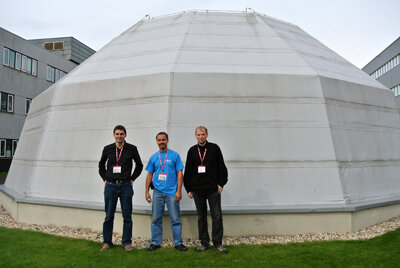
A few days later, 17-20 September, the GRAVARC team from Masaryk University, Czech Republic, arrived. The first team from that country to participate in Spin Your Thesis!, they were trailed for two days by Czech national media.
The team investigated the behaviour of gliding arc discharges between two splayed electrodes, and the carbon particles these build when immersed in a methane-rich atmosphere. The particles can include carbon nanotubes, nanodiamonds, graphine and fullerenes, used in advanced technology to make equipment more efficient or smaller.
The team studied the effect of gravity on the shape, intensity, colour and emission spectra of the discharge. Then they made an initial analysis of the solid particles formed, using one of ESTEC’s scanning electron microscopes.
‘I want to include the results in my PhD thesis and to summarise them in a scientific paper. I came to know many interesting people during this programme and the chance to be in ESTEC and cooperate with ESA was great experience,’ says team member Jiří Šperka.
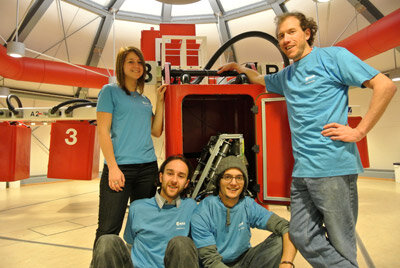
The final team for 2012 was WETSUS. The Wetsus Centre of Excellence for Sustainable Water Technology, The Netherlands, brought together students from Graz, Budapest and The Netherlands to study a water bridge in hypergravity.
A floating bridge of water can form between two adjacent beakers when a high voltage is applied to them. In reality water flows through the bridge, yet theoretical models treat it as static. Hence they are poor at predicting its behaviour, which depends upon the interplay of surface forces, the electric field, and gravitational forces. By using the LDC to vary the gravitational force, the team hoped to improve the models.
WETSUS was highly ambitious for the timeframe of Spin Your Thesis!, and the campaign was postponed until 5-8 November to give the team more time.
Creating the delicate balance of forces needed to achieve the water bridge in the centrifuge proved challenging, yet the team eventually managed it. The data will prove invaluable now in refining the experiment and they plan to return to the LDC at a later date to obtain publishable data.
The 2012 Spin Your Thesis! campaign proved again that getting in a spin with your experiments can sometimes be a very good thing.
A call for proposals for the 2013 ‘Spin Your Thesis!’ campaign was issued by ESA on 5 September this year. Student teams from ESA Member States and Cooperating States are invited to send their proposals by 10 December 2012.


